
Goldfish are the classic aquarium species. In the media, they are usually depicted as simple plain orange fish. While many are, there are so many more that have distinctive colors and shapes.
Bubble Eye Goldfish are truly unique creatures. They make a great centerpiece for cold-water aquariums because they stand out in a mix of other fish.
Some prior fishkeeping experience is useful since these delicate fish are prone to injuries and disease. Their appearance makes them worth the risk, however, so they have been greatly sought after.
We are going to talk through how to properly care for Bubble Eye Goldfish. By the end, you will know how to design the perfect tank, choose suitable tank mates, and avoid those pesky diseases.
TABLE OF CONTENTS
Bubble Eye Goldfish Facts & Overview
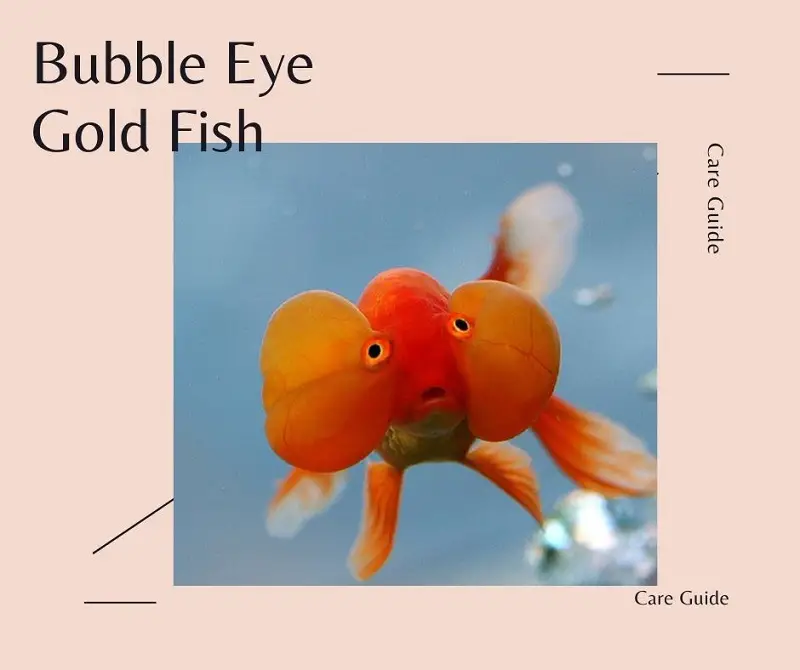
| Category | Rating |
| Care Level: | Intermediate |
| Temperament: | Peaceful |
| Color Form: | Various |
| Lifespan: | Up to 15 years |
| Size: | Up to 4 inches |
| Diet: | Omnivore |
| Family: | Cyprinidae |
| Minimum Tank Size: | 20 gallons |
| Tank Set-Up: | Cold freshwater planted aquarium |
| Compatibility: | Peaceful community |
All Goldfish are the species Carassius auratus from the Cyprinidae family, but they come in lots of varieties that often look completely different from each other.
Bubble Eye Goldfish (or Water-Bubble Eye Goldfish) is a type of Fancy Goldfish. A Fancy Goldfish is easily distinguished by its paired tail fins and egg-shaped body.
They became popular in western countries during World War 2, but Bubble Eye Goldfish originated in Asia. Natural populations don’t exist since they are the result of captive breeding.
This variety is controversial and splits fishkeeping hobbyists. Due to large sacs by the eyes, the fish have poor vision and blindness is common.
Many people argue that the variety is inhumane because their wellbeing has been compromised so that breeders can produce something deemed more aesthetically desirable.
Their lifespan is also shortened compared to other varieties; they usually live for 10-15 years if they are cared for properly, which is still a big-time commitment.
Each pet store stocks different types of Fancy Goldfish so you may have to search around for a close supply of Bubble Eye Goldfish. Some stores even refuse to sell them on ethical grounds.
Prices will be in the range of $10-$15 per fish. This can vary between stocks; it is common for individuals with larger sacs to cost more.
This is a delicate variety, so it is important that you purchase healthy individuals to give them the best chance at survival in your aquarium. Check the fish carefully for signs of injury or disease.
Spotting disease should be particularly alarming; don’t purchase any livestock and shop elsewhere.
Typical Behavior
Bubble Eye Goldfish are peaceful and get on well with other peaceful species. They are delicate though, so boisterous or aggressive species can easily damage them.
Their genetic ‘handicaps’ make it difficult for them to swim quickly; they cannot make fast getaways if threatened. It also makes it hard for them to compete for food.
Don’t let this tempt you to keep them alone though because they are social creatures that do best in a small group.
They are vulnerable to damage, which is the main risk to consider before purchasing some. Beginners may find other varieties easier if they’ve never kept fancy goldfish before.
They operate in all areas of the tank. They are good scavengers, often heading to the substrate in search of food. Sometimes plants might get uprooted in the process.
Appearance
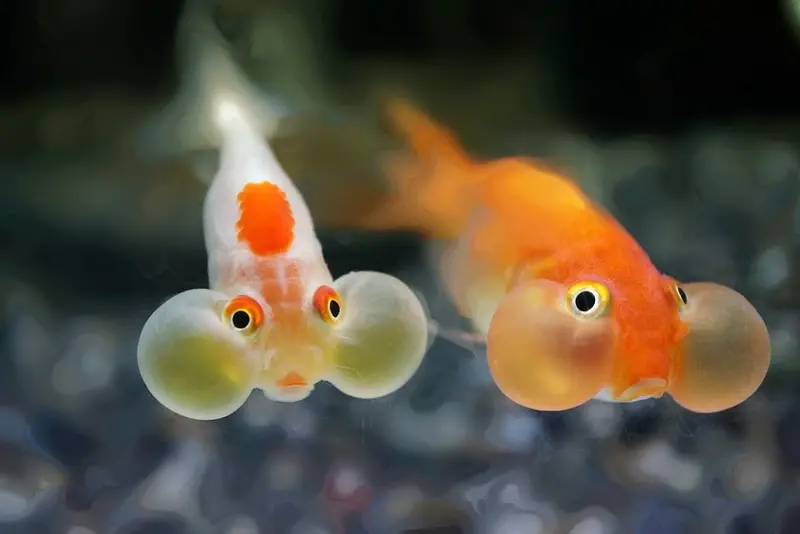
Let’s start with what makes these fish unique. Below each eye is a large fluid-filled sac that moves as they swim. This is what they are bred for, so the bigger the sacs are, the greater the fish’s value.
Some breeders have even produced fish with four sacs, two under each eye.
Individuals with larger/more sacs will be more vulnerable to damaging them.
Having sacs under their eyes dramatically reduces their vision. They have very poor eyesight, which can cause difficulties at feeding time, so they may need longer to feed.
It also makes it harder for them to deal with boisterous tank mates; they need a calm environment.
The sacs are almost transparent which means you can see through them. They are thin and delicate, making them prone to damage when kept with large active fish.
The shape and color of Bubble Eye Goldfish can vary. Some have a rounded body, but others are long and thin. Some have matte scales whereas others have metallic-looking ones.
Their fins make another interesting feature. Like most Fancy Goldfish, they have two tail fins. Unusually though, they have no dorsal fin, which makes it difficult for them to stay balanced in the water.
The vast majority of them are fully orange, red, gold, or yellow. On occasion, you might see black individuals or even those bred to look like Japanese Koi.
An adult will grow to be 3-4 inches.
During the breeding season, a male will have white prickles (tubercles) on its head and gill covers. Females will look fatter from above because they will be carrying eggs.
Sexing Bubble Eye Goldfish is virtually impossible while they’re young or when it is not breeding season.
Habitat and Tank Conditions
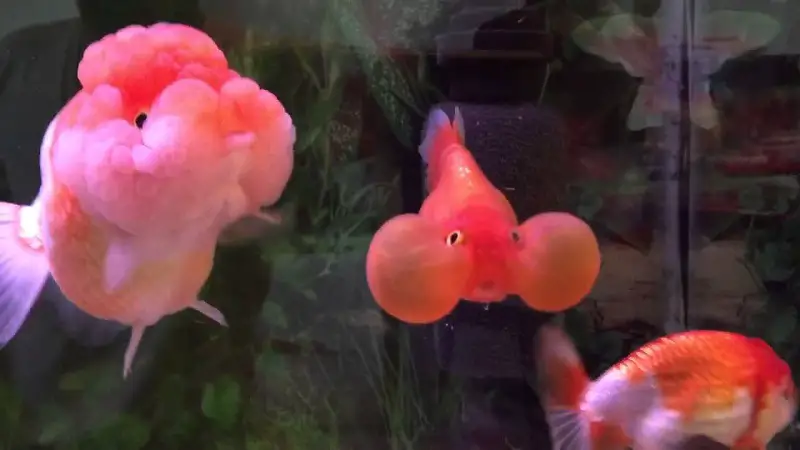
Bubble Eye Goldfish are not found in the wild, they are a result of captive breeding. This means you can’t look to their natural habitat for help when trying to design a suitable aquarium.
What you can do is consider the habitats of closely related species that are found naturally. Carps work well for this because they are fellow Cyprinids.
Carps live in slow-moving rivers and lakes with dirt lining the riverbed. The water temperature can vary dramatically between habitats, some being tropical and some being cold-water.
Plants would be abundant, with many of them floating on the surface.
Some people like to keep Goldfish in ponds. Fancy Goldfish are more susceptible to disease and less able to cope with the dirtier water. Larger varieties (like Comet Goldfish) are best for ponds.
Tank Conditions
Much of what we describe when it comes to ideal tank conditions will be similar to a Carp’s natural habitat.
Pick a soft substrate like sands and fine gravels. A sharp substrate can easily scratch your delicate fish; their fluid-filled sacs are particularly at risk.
Add a few spots to hide with decorations, but reserve most of the available space for plants. They will offer plenty of shelters and help to keep the water clean.
Pick hardy species though, because your fish might uproot them. Hornwort is a good option, it can be planted in the substrate or floated on the surface.
It’s unlikely that you will need a heater. This cold-water species only needs a temperature of at least 50°F, the upper limit is 75°F. The pH should be between 6.5 and 7.5.
The only essential piece of equipment is a filter. Standard aquarium lights are fine. You could add an air/water pump to move and oxygenate the water, but don’t feel you have to.
Standard aquarium lighting will be fine.
What Size Aquarium do they need?
Bubble Eye Goldfish is smaller than most similar varieties, but they still need plenty of space. The minimum tank size is 20 gallons, but the more space you provide, the more likely they are to stay healthy.
Avoid using glass bowls instead of standard aquariums. These are usually too small, especially when your fish reach maturity.
How Many Can be Kept Per Gallon?
Aim to have 5 gallons of water per fish because though they will group together sometimes, they also like swimming off on their own.
Tank Mates
There are two main things to consider when choosing tank mates: the water temperature and your Bubble Eye Goldfish’s fragility.
The ideal temperature range for these fish is very low compared to the preferences of other popular aquarium species. This reduces the number of options available to you.
You’re further restricted by how weak the fish are. They are easily damaged by boisterous fish like Cichlids.
Stay away from fin-nippers too, species like Tiger Barbs will target the large double tail fins of your Bubble Eye Goldfish.
Small shoaling fish work well. You could try Zebra Danios, Neon Tetras, Mollies, Rosy Barbs, or White Cloud Mountain Minnows. Angelfish and Dwarf Gourami are some possible larger options.
Other types of Goldfish would seem like the ideal tank mates as they need the same conditions. While you can add some other Goldfish varieties to your aquarium, not all will be suitable.
Do not add single-tailed varieties like Comet Goldfish as they are too strong and fast; they would outcompete your Bubble Eye Goldfish for food very easily.
Choose other twin-tailed, fancy varieties of Goldfish. The most ideal types will have difficulties associated with their eyesight, like Black Moor Goldfish and Celestial Goldfish.
Goldfish will occupy all levels of your tank, so you don’t necessarily need bottom feeders to add interest to the lower regions. They will clean up leftover food when they head lower down too.
If you do want bottom feeders, you could get some Corydoras Catfish, Kuhli Loaches, or Otocinclus.
You can add some small invertebrates without the risk of them being eaten. Examples include Cherry Shrimp, Ghost Shrimp, Amano Shrimp, Nerite Snails, or Mystery Snails.
Invertebrates are a great way to add some new behaviors.
Keeping Bubble Eye Goldfish Together
Keeping them in groups of their own kind is the safest choice; you will not need to worry about compatibility problems causing injuries.
These fish are very social around their own kind; they will group up and interact with each other. Don’t keep them alone or they’ll get lonely.
Bubble Eye Goldfish can eat a lot, so they can excrete a lot too. This waste can accelerate the build-up of nutrients and pollutants in the water, which in turn makes it easier for algae to bloom.
A regular cleaning schedule will help to prevent this.
Just be sure not to overstock the tank. Fancies are messy, they eat a lot which produces lots of waste.
Diet
Bubble Eye Goldfish can easily develop digestive problems, so it is important to design a healthy diet. This is simply because they are omnivorous and will eat most aquarium foods.
To ease the workload for their digestive system, feed your fish in small amounts twice a day. Only give them an amount they can finish within 2 minutes.
Though they may still look hungry, don’t feed them extra food because they would happily eat all day. Remove any uneaten food to help keep the tank clean.
High-quality foods are the best choices for these fish. This means minimizing the use of dried foods (e.g. flakes and pellets), which have a low nutrient content.
Live and frozen foods (moist foods) are better choices as they retain their nutrients. You could use daphnia, brine shrimp, or bloodworms.
Try to supply some plant matter too, as this contains fiber which helps the digestive system. Green vegetables are good for this, most people have foods like lettuce and zucchini in their kitchen.
You could even use these to make your own homemade fish foods.
Occasionally these fish will nibble at your live plants, but this will be infrequent if they are getting enough food elsewhere.
If you have a community aquarium, watch your Bubble Eye Goldfish at feeding time to make sure they manage to eat something. Their slow nature and poor eyesight make it easy for them to be outcompeted for food.
Care
These fish eat quite a lot and can create a big mess in your aquarium. Cleaning the tank regularly is therefore essential for maintaining a healthy environment.
Bubble Eye Goldfish can eat a lot, so they can excrete a lot too. This waste can accelerate the build-up of nutrients and pollutants in the water, which in turn makes it easier for algae to bloom.
A regular cleaning schedule will help to prevent this.
Perform weekly water changes to stop the buildup of pollutants. Remove any uneaten food from the tank so that it cannot be broken down to release toxins.
The most vulnerable part of Bubble Eye Goldfish is their fluid-filled sacs. Due to their poor eyesight, your fish could easily swim into objects and damage the sacs.
Make sure that decorations don’t have any sharp edges and your substrate is fine-grained.
It is common for their sacs to get caught in the filter inlet, so a foam cover over the inlet is advisable to prevent this.
A damaged sac will usually grow back, but it could be a different size or shape from its original form. This can cause buoyancy issues because the sacs aren’t symmetrical.
The healing process is slow, which leaves the individual vulnerable to disease. Diseases should be avoided at all costs, but sometimes they’re inescapable. There are a few common ones to be aware of.
All are at risk of swim bladder disease. This causes buoyancy issues, so the fish would either be floating at the surface or sitting on the substrate.
Overfeeding can be a problem. Starve them for 24 hours, then start introducing foods that are full of fiber, like vegetables.
Parasitic and bacterial skin diseases can be an issue too. There are lots of different ones, but they are easy to see because they tend to present as color changes and spots.
The solution is to buy medication; some are available in stores, others are given out by veterinarians.
Once you have identified a sick fish, transfer it to a quarantine tank. Be particularly careful when handling this variety because they are easily damaged.
There should be few outbreaks in a clean tank, but these fish catch diseases more regularly than most. Their organs are squashed up inside their body, which can make them more susceptible.
Breeding
They will happily mate in captivity if conditions are ideal; you will need a specialized breeding tank.
The tank will need to be clean. Use a water testing kit to check that the water conditions are being maintained.
Raise the temperature of the water to simulate spring, which is a seasonal spawning trigger for many animals.
The temperature change should be gradual, so the fish aren’t sent into shock. Increase it by 3°F a day, making sure not to raise it above 75°F.
A nutritional diet is essential when getting your Bubble Eye Goldfish ready to mate. High amounts of protein (from foods like brine shrimp) are particularly important.
Plants make good surfaces for a female to stick her eggs, so spread plenty around a breeding tank.
When ready to mate, the male will start circling the female and chasing her around the tank. If she is impressed with the courting, she will spawn with him.
This could result in up to 10,000 eggs that will be spread around surfaces in the tank. The parents may eat the eggs, so separate them.
After 4-7 days, the eggs will hatch, releasing many tiny fry. Feed them small foods that can fit in their mouths. Infusoria is high in protein, which is needed for growth, making it a good choice.
There are foods available in stores that have been specifically designed for fry. Alternatively, you could crush up standard fish foods until the fry is large enough to eat an adult diet.
After 6-9 months, the characteristic fluid-filled sacs should begin to develop.
If your Bubble Eye Goldfish do not start mating, separate the males and females for a few weeks. When you reintroduce them, they should show a greater interest in spawning.
Are Bubble Eye Goldfish Suitable for your Aquarium?
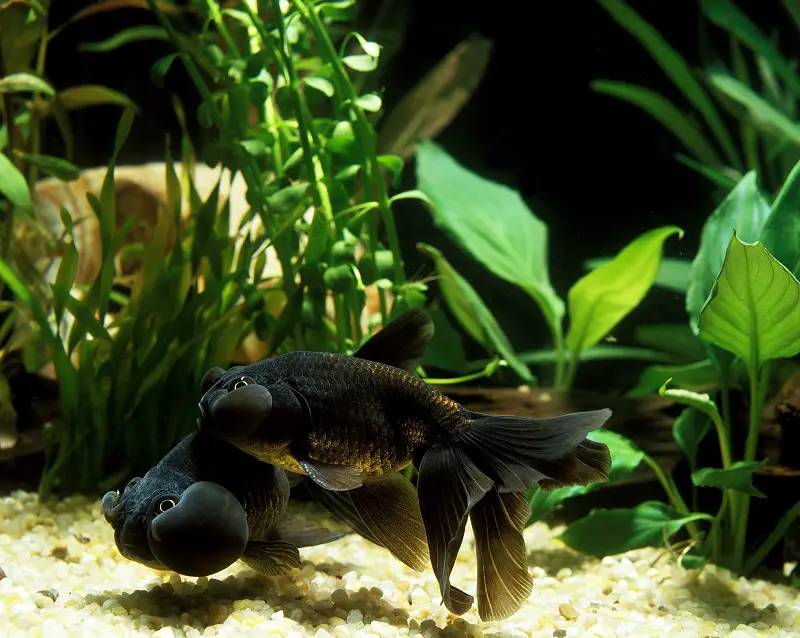
Most freshwater aquariums are tropical, but Bubble Eye Goldfish need a cold-water setup.
This will likely be the most restricting factor when starting your aquarium because it limits the number of possible tank mates.
There are still lots of fish to choose from if you want a community tank though.
Beginners may find Bubble Eye Golding fish more challenging than some other varieties, but it should be okay, providing that they’ve done their research.
Keeping these delicate fish away from damage is the main risk, but if the aquarium has been designed properly, your main job will just be to keep it clean.
These fish are very attractive and an excellent way to move on from the more commonly kept species.
If you don’t think they’re for you, other varieties of Fancy Goldfish might be, like the popular Black Moor Goldfish.
Are these your favorite variety of Fancy Goldfish? Let us know in the comments below…

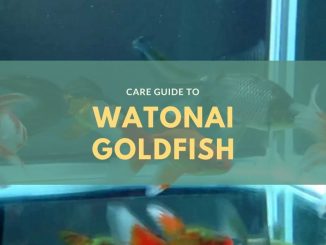
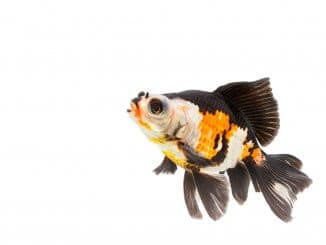
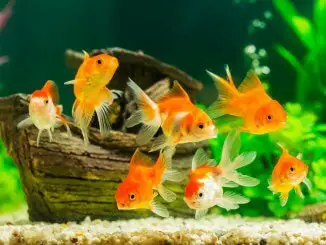
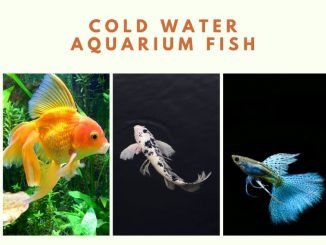
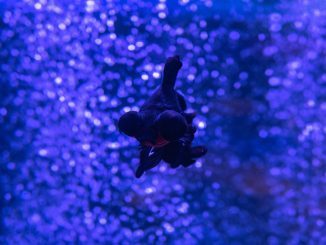
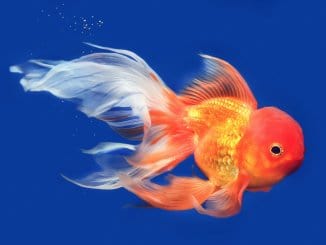
Be the first to comment